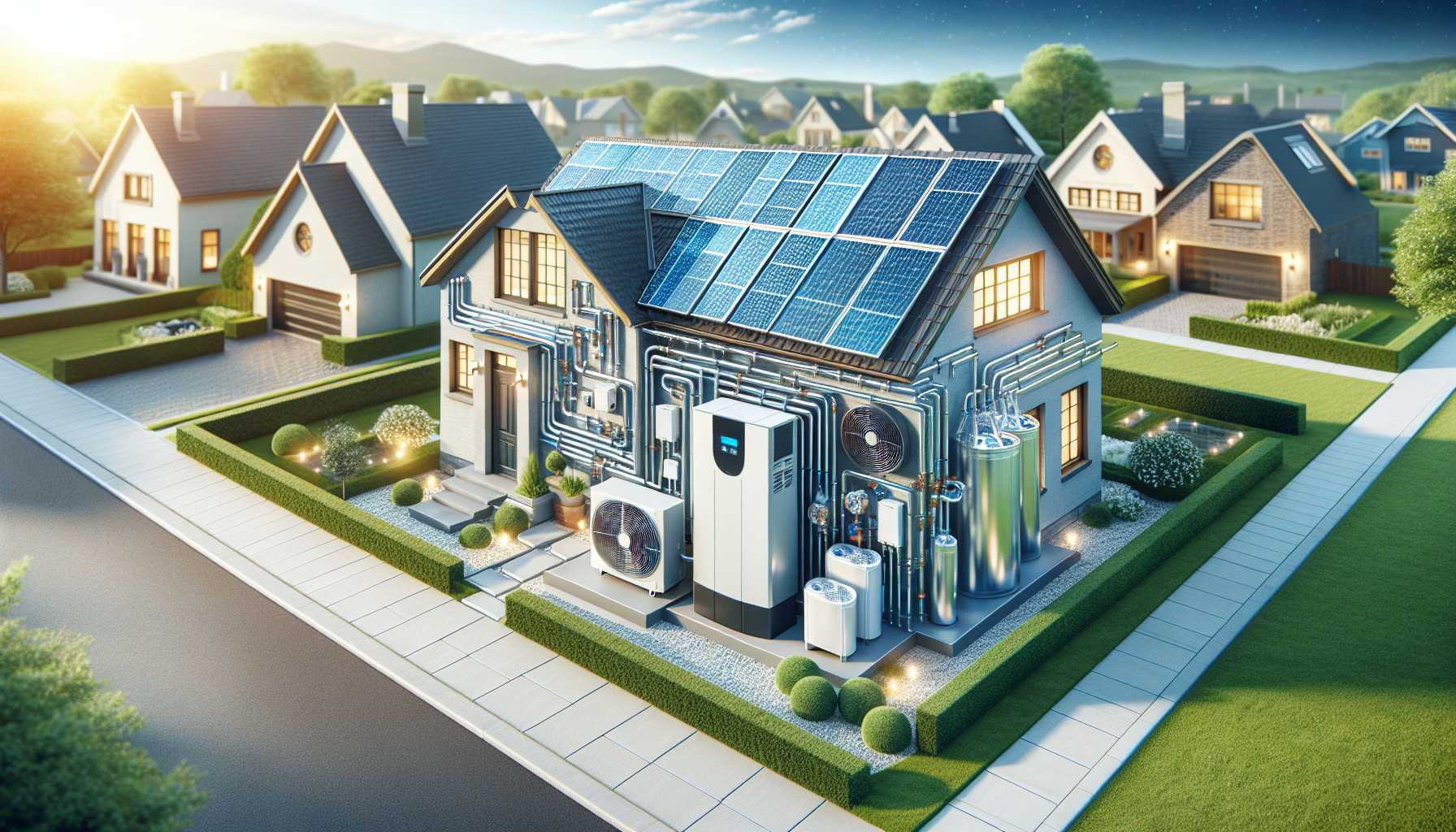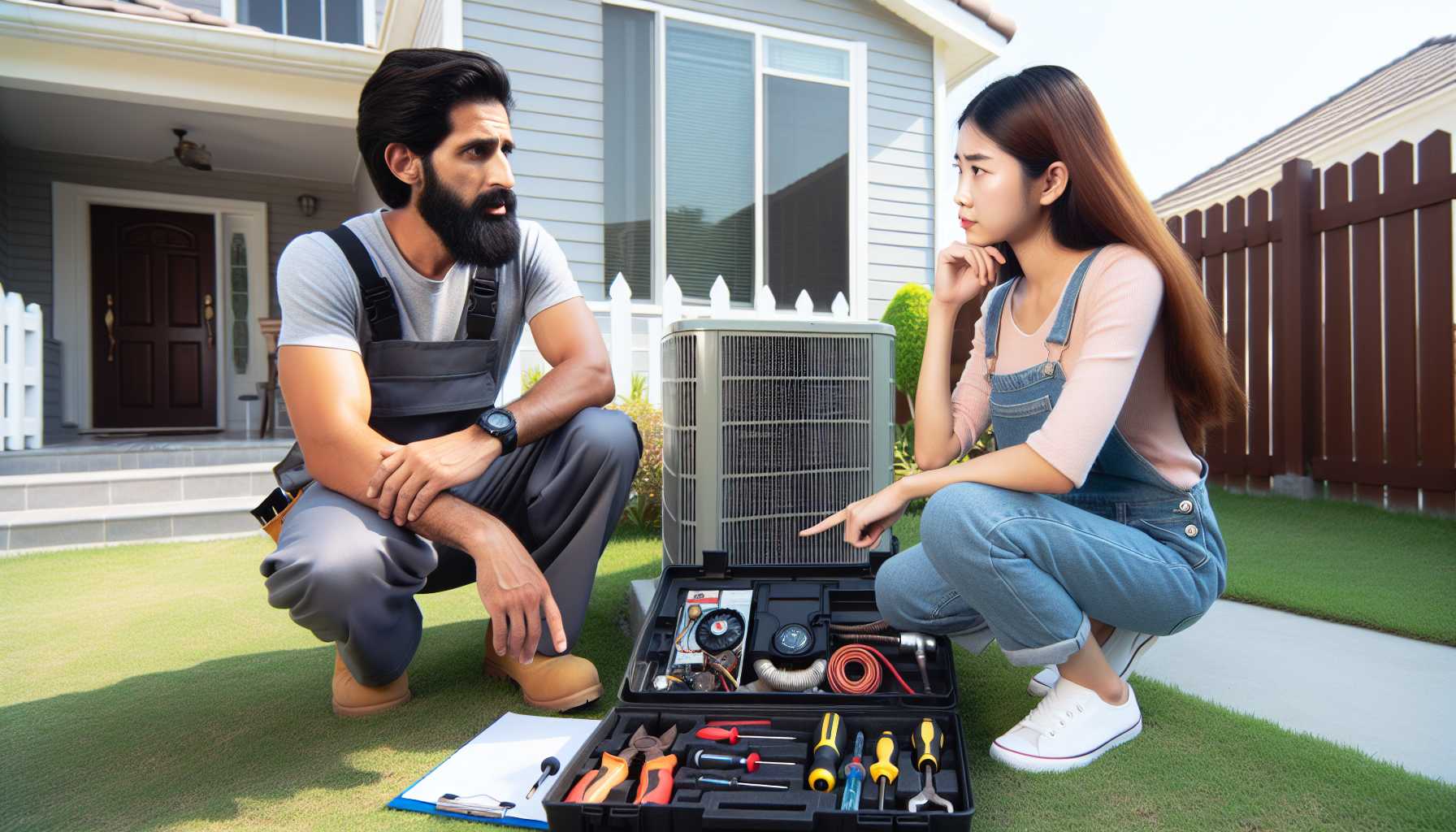The Heat Pump Crusade: A Ticket to a Carbon-Neutral Homefront
In the escalating battle against carbon emissions, an unlikely warrior is emerging from the tech trenches: the humble heat pump. Beyond the straightforward concept of heating and cooling, these systems are becoming pivotal in the epic quest for residential decarbonization. By the end of this roaring decade, an ambitious cohort of 25 states is taking up arms with a goal that sends shivers down the spine of fossil fuel dependence—installing a staggering 15 million heat pumps. It’s an ambitious endeavor that’s heating up the residential climate-friendly market. However, this feat is not for the faint-hearted as it comes hand-in-hand with the need to ramp up the workforce, adding a predicted 23,000 HVAC technicians by 2032. Prepare for an overworked, yet groundbreaking force at the heart of our homes.
The catch is, outfitting homes with state-of-the-art HVAC technology isn’t as breezy as it sounds. The current efficiency of heat pump installation doesn’t exactly thaw the hearts of contractors, devouring hours without lending itself to the delights of automation. Yet, the horizon holds promise with the emergence of software genius that could accelerate the quoting process and send shockwaves across the industry’s productivity. The game’s afoot—philantechy, if I may—to woo over contractors from the familiar arms of gas furnaces to the charismatic embrace of heat pumps.
Contractor Conundrums: A Craft Crying Out for Innovation
Nothing quite tests the patience of contractors like the trial of HVAC equipment installation. Picture this: spending 3-5 hours wooing a potential customer with all the charms of an HVAC system only to have a conversion rate of a mere 20-25%. It’s not just a test of patience; it’s a colossal drain on valuable resources.
Step into the scene, the steely-eyed Phil Krinner of Arch, a software maven making waves by tailoring solutions to HVAC installers’ woes. It’s a story of converting frustration into innovation, chiseling out the inefficiencies, and giving contractors a fighting chance in the heat pump arena.
Connecting the dots from his solar industry background, Krinner spotted a conspicuous gap. When switching out his apartment’s heating unit, he faced a barrage of contractors, each touting their wares—gas furnaces, heat pumps, yet not a soul could unfurl the long-term savings. It was this startling void that sparked a eureka moment, a realization that the heat pump industry, ripe with potential, was thirsting for the same kind of data artillery that propelled solar into the stratosphere.
The Software Spark: In Pursuit of Perfection
Diving into the industry’s depths, Krinner shadowed contractors and soaked in the nuances of their trade. Against this backdrop, he and co-founder Sacha Schmitz rallied a team to develop an algorithm that’s nothing short of sorcery for the quoting process. This ingenious tool employs public home details—think square footage, build year—to conjure up suitable heat pump specs in record minutes. The game-changer? No more meticulous room measurement rituals, a boon for contractors, and a leap towards efficiency.
What’s more intriguing is that heat pumps brandish a somewhat forgiving nature; you don’t need bull’s eye precision. Their output dances to the tune of varying demands, and five standard indoor component sizes play their parts well enough to hit a 20% accuracy mark, or so claims Krinner.
Arch, the startup in question, has just bolstered its armory with a robust $6.2 million seed round led by a cavalry of investors. As they forge their way up the Northeast, they carry a torch for homes transitioning from oil heat, a pricey adversary. The stage is set for Arch to broaden its horizons, sharpen its algorithmic blades, and add tools that unveil the potential utility bill savings for homeowners.
Political Tailwinds and Market Headwinds: The Heat Pump Dilemma
Krinner and Schmitz find themselves at a historic juncture. States are rallying behind heat pump propagation, and the Inflation Reduction Act buffs up the incentives, offering up to $2,000 to homeowners who join the crusade. If heat pumps were tantalizing before, they’re almost irresistible now.
Yet, gnawing at this newly woven fabric of change are stubborn market forces. The old guard of contractors, set in their ways with oil and gas furnaces, might prove a tough nut to crack. But, with a sprinkle of showing the profitability and value of heat pumps, the resistance might just melt away. The tale mimics the one we’ve seen in the solar industry—software driving adoption with the ferocity of a revolution.
Apple Vision Pro: A Headset Heeding a New Reality?
Shifting gears to another tale from the tech domain, let’s talk headsets, specifically the Apple Vision Pro. Early adopters are experiencing a curious blend of amazement and disappointment. Reports and tweets speak of unparalleled technological wonder laced with an uncomfortable wearability factor. Despite the marvel, the looming end of a 14-day return window sees some of these gadgets trekking back to whence they came.
Apple’s Vision Pro, sporting a hefty price tag and fashioned as a novel device in a still-maturing ecosystem, is a concoction brewing a peculiar experiment in user acceptance. Yet, in the absence of official sales or return rates, the narrative is murky. Let’s not cast our judgment just yet. Could it be a case of pioneering growing pains? After all, the riddles of VR headset adoption are not easily solved, and perhaps it’s a matter of time before this tech chic finds its true footing among the discerning masses.
In wrapping up, our tales today – the rise of heat pumps and the curious case of the Vision Pro – serve as a reminder of how tech reshapes our lives and homes, for better or for worse, in comfort and in cyberspace. The tech world continues to innovate, challenge, and at times befuddle. And as a tech enthusiast and a watcher of this ever-turning wheel, I’m perched eagerly at the edge of my seat, awaiting the next chapter of this incredible journey.





